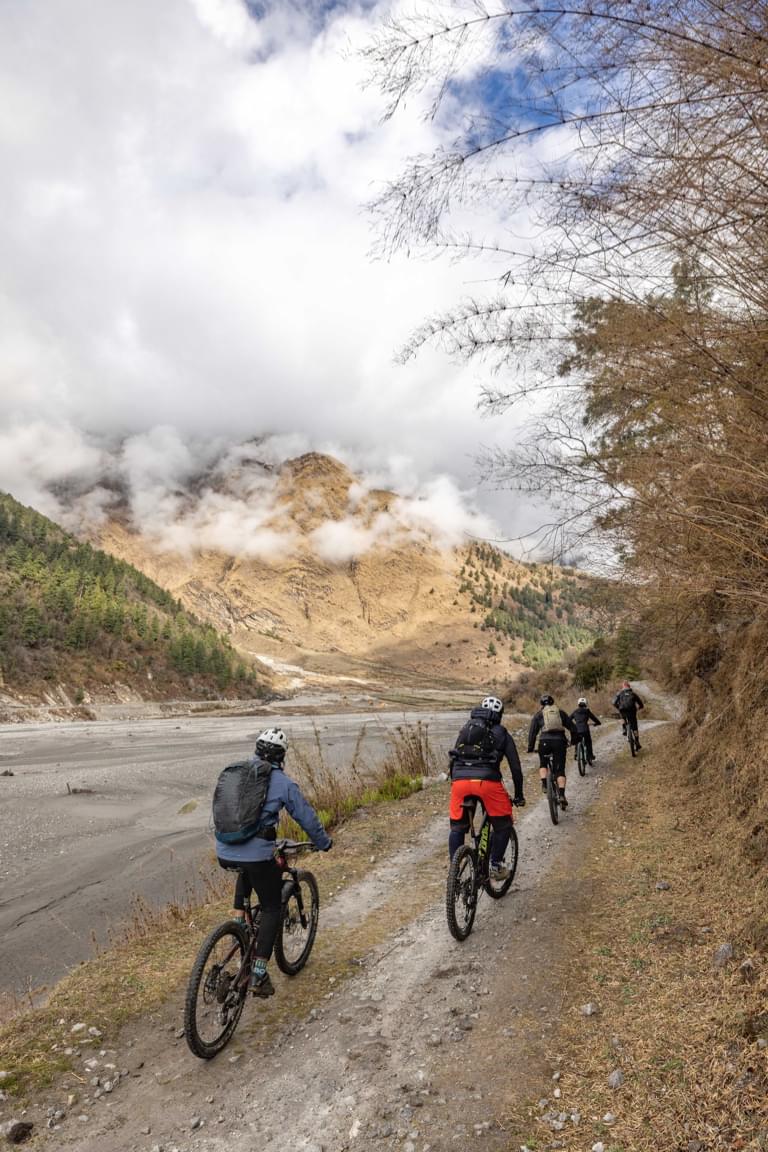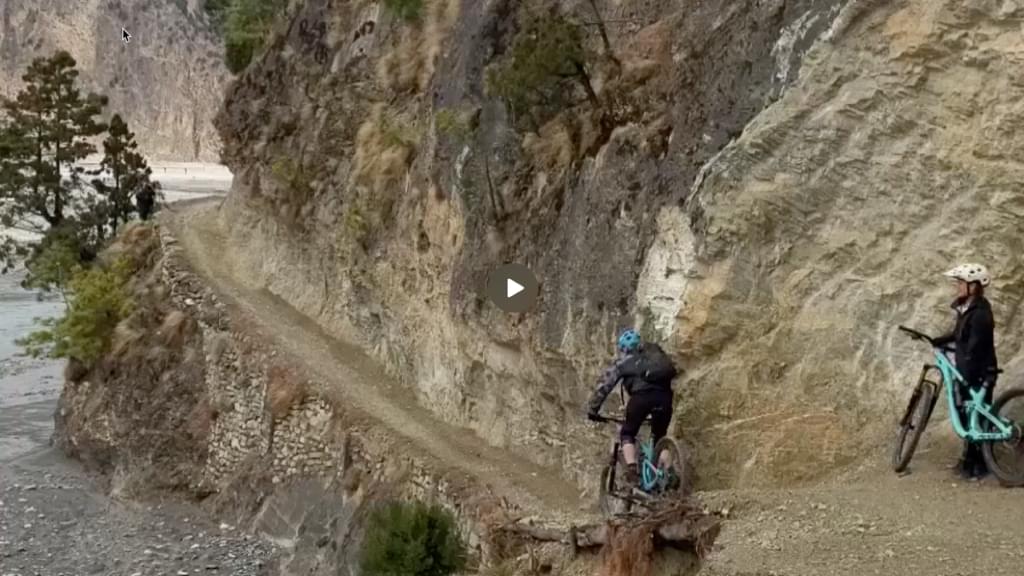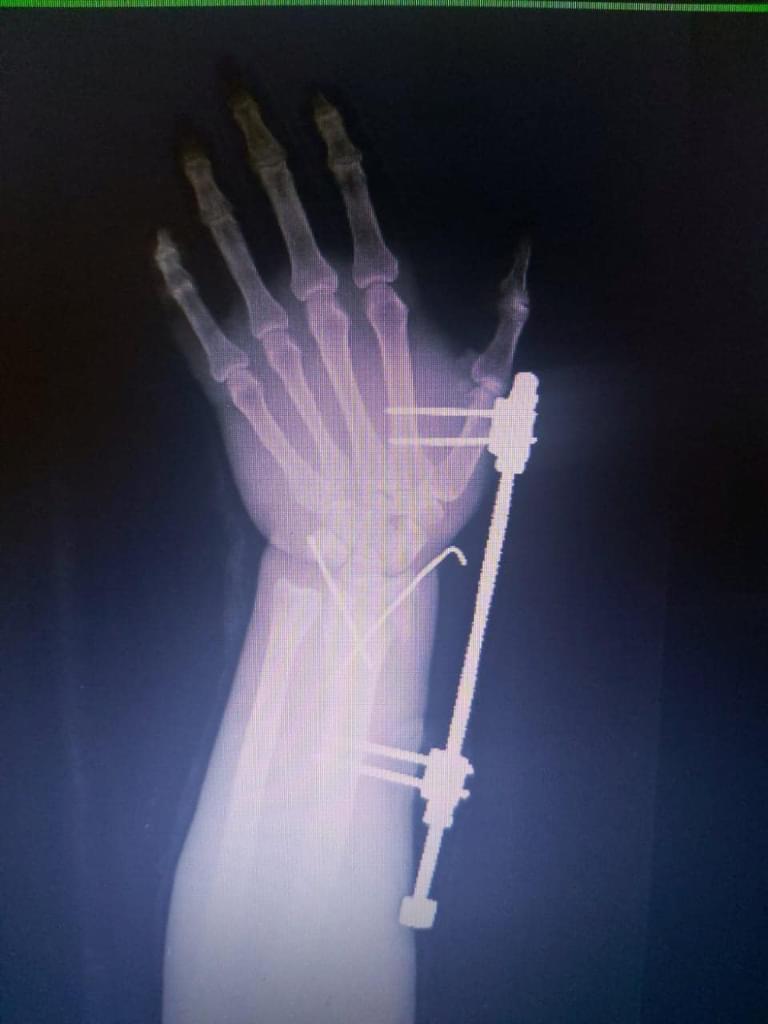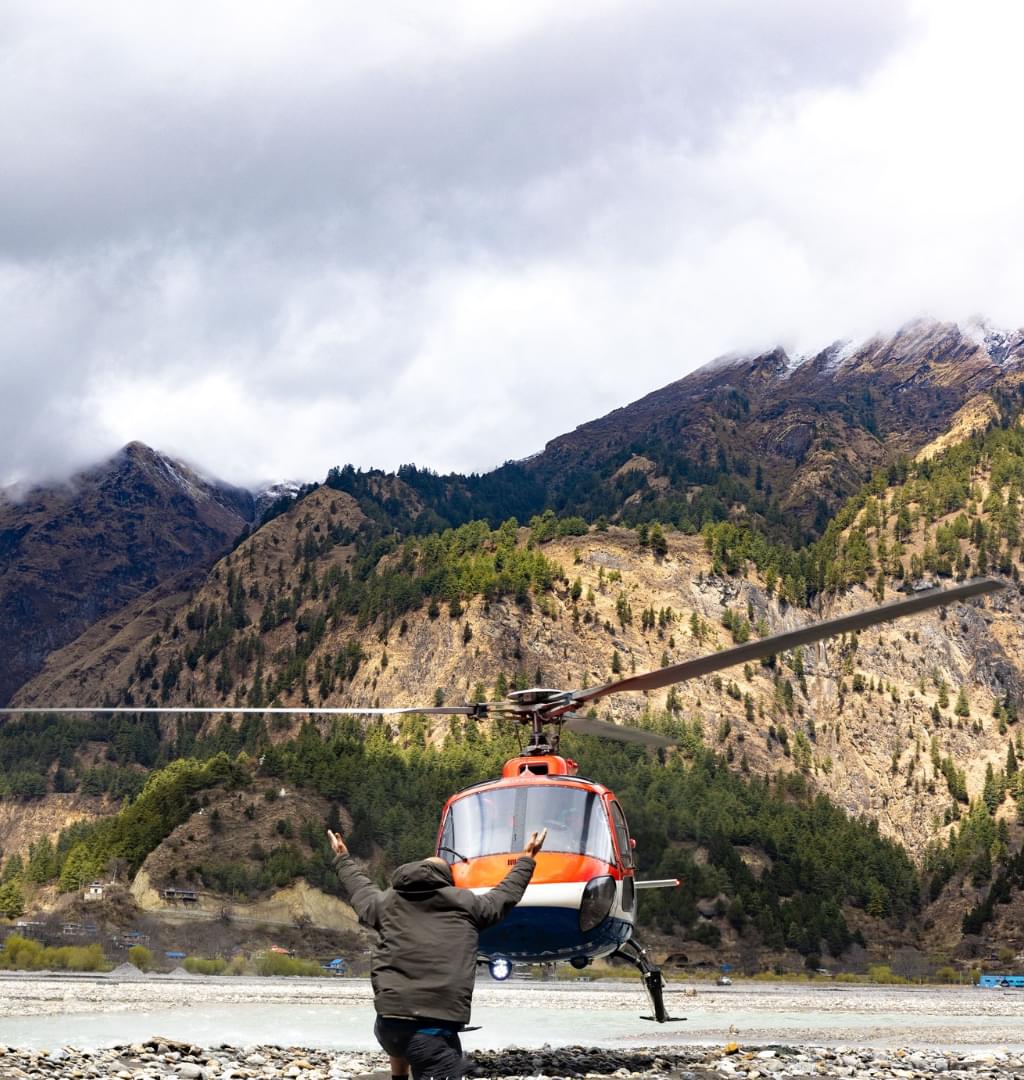Not Using Medical Insurance Emergency Numbers Can Cost You Thousands
Filed in: Medical Insurance |Travel Insurance
10 May 2023
Why it's essential to use emergency telephone numbers from a medical or travel insurance plan provider.
A recent client claim in Nepal has, once again, raised the importance of why it's essential to use emergency telephone numbers from medical or travel insurance plan providers when disaster strikes - overlooking this small but crucially important requirement can have extremely serious and impactful financial consequences that can cost tens of thousands of dollars!.
This article examines a specific client claim to highlight key factors that all individuals need to be aware of.
This article will also highlight emergency service and hospital scams that continue to plague Nepal despite first being reported 12 years previously in numerous news articles and in various videos posted by the news media including the BBC and CNN.
The Nepalese Mountainbike Trip That Turned Into A Costly Scam
This specific case focuses on a 40 year old male who had signed up for a 'once in a lifetime' mountainbike trip to the Nepalese mountains in Mustang, organised and co-ordinated by a local Nepalese tour company.
As one might imagine, the high altitude and harsh terrain are formidable factors to account for in the demanding environment that exists in the Nepalese mountain regions. Even for the fit and hardy, the conditions in the mountains do not come without risks.
Despite the challenges, and after months of preparation, the initial tour briefing began. It is important to recognise at this early stage that the client was asked to confirm that he had medical insurance in place, a good starting point but sadly however no questions were asked regarding:
• the name of the insurance company
• the policy number
• or the emergency contact numbers of the insurance company
There is an argument that these omissions of enquiry relate to a lack of professionalism on the part of the tour company but as you will discover the catastrophic events that followed were due primarily to the heli-vac and hospital services working in collusion.

Within a few short hours after the briefing, disaster struck when the client lost his balance whilst riding a mountainside single track. The accident resulted in a 10 metre fall down a sheer rock face as can be witnessed in the video below. Fortunately for the client the fall was not fatal.
Despite being knocked unconscious the clients helmet had saved his life, it had performed the function it was designed for by rupturing at the point of impact. The clients arms and wrists however fared far worse with multiple and extremely complex fractures in both arms and both wrists.
It was at this juncture, whilst the client was semi-conscious and in extreme pain, that the tour guide, in a state of panic and concern for the client, hurriedly set about making telephone calls to a number of known local helicopter services.
Those in the clients party recall overhearing the tour guide dismissing several helicopter services as they were primarily focused on the commission payments for the referal reccomendation!
The tour guide chose a helicopter service that appeared to him to be concerned only with accepting the job in hand without any nefarious attribution to commission payment issues.
There was no attempt at contacting the clients insurers nor any attempt at finding the insurers emergency contact numbers.

Being only semi-conscious and in extreme pain from the multiple breakages and fractures the client was in no condition to intervene during this period.
After a wait of almost 90 minutes a helicopter arrived at the scene and the delicate boarding process began.
A significant point of note here is that this particular helicopter, as shown in the imagery, was not what is termed a medical helicopter ambulance - the helicopter that arrived at the scene is typically used to ferry tourists up and down the mountains ostensibly as a ski-lift operation.
There were no trained paramedics present nor was there any medical equipment on board - in fact stacked in the back of the helicopter were numerous sets of ski's severely limiting the space available for the client.
Insurance companies, in such cases, would have mobilised a medical helicopter ambulance with the appropriately trained medical staff to evaluate the clients medical condition at the scene and would have had the necessary medical equipment on board to help save life or limb if required.
The helicopter in question had only a foreign non-medical pilot aboard, no trained medical professionals or medical equipment!
It took the helicopter 20 minutes to fly to the closet medical clinic in Pokhara where it was quickly assessed that the injuries were so severe that only an international hospital with the necessary facilities and surgeons could deal with them. The tour guide instructed the helicopter service to transport the client directly to a University medical facility in Katmandu believing that they could offer the best treatment for the client.
A second helicopter flight was commissioned that in turn required a further 40 minutes flight into Katmandu. However rather than being flown to the University medical facility as instructed the helicopter ground staff took the decision to divert the helicopter and the client to an alternate international hospital.
It is unknown why the helicopter ground staff took this decision to ignore the tour guides instructions but questions, once again, have to be asked about the relationship between referal and commissions between helicopter service companies and international hospitals which is predominant in Nepal - the exhorbitant billing issues discussed further on may provide clues.


Emergency Hospital Admission Protocols & Processes
For readers unfamiliar with private international hospital admissions THAT ARE NOT LIFE THREATENING it is customary for such private hospitals to either:
• First obtain what is known as a GOP (Guarantee of Payment) from an insurance company or
• request that the patient or next of kin provide a payment method normally in the form of a credit card to ensure that the hospital would be paid.
International private hospitals are commercial business enterprises and need to establish at outset and prior to any treatments that services can and will be paid for.
In this instance however the hospital immediately proceeded to surgery without communicating with the insurance company nor requesting the client or his next of kin to provide a payment method - it is important to remember that THIS WAS NOT A LIFE THREATENING SITUATION, international private hospitals would and do provide treatment if life is in danger.
What was obtained and retained by the hospital at this time was the clients passport.
Hospital Billing Shocks
Two days after surgery the client asked the hospital administrators whether the insurance company had been contacted and whether all had been arranged in terms of hospital costs. The client was told '...do not worry you have insurance, they always pay'.
A further two days passed at which point the hospital, with alarm and great concern, spoke with the client to advise that there were 'issues' with the hospitals' request for invoice payment from the insurance company and requested that the client contact his insurers to urgently resolve the 'issues'.
The insurance company were duly contacted - what transpired was the beginning of a series of shocks and revelations for both him and his family.
Read any medical or travel insurance contract and you will quickly discover that It is a condition of those contracts that for any medical evacuation service costs to be met the insurance company MUST be informed prior to any evacuation service being engaged.
Why is this important to insurance companies? Therre are several reasons - Insurance companies have, over many years, established relationships with reputable emergency service operators such as helic-vac companies and hospitals that are known and trusted to provide exceptional service in emergency situations. These companies have the trained and qualified medical staff and infrastructure to perform such evacuations.
In Nepal there are many companies that operate in this 'market' and not all would meet the strict criteria necessary to handle medical evacuations.
In this instance the helicopter service used would most definitely not been used by an insurance company.
Insurance companies once alerted to a potential medical evacuation situation will undertake to make all necessary evacuation arrangements including the choice of an appropriate air-ambulance, hospital facility and deal with all of the administration that results from the incident that can extend to liaising with embassies and immigration departments.
Due to the insurance company not being alerted, the clients tour guide had inadvertantly breached the insurance contract as far as evacuation costs were concerned.
After the call to the insurance company, representatives from the helicopter evacuation services company presented themselves at the hospital seeking payment there and then for the heli-vac services from the client which as you may well imagine were not insignificant sums!
Further shocks were to occur, the second of which would prove equally financially painful and it related to the hospital invoice itself for the in-patient treatment and surgeries.
At this stage it is also important to understand the context and a little more about insurance contracts and procedures. I referenced earlier that the hospital rushed to treatment and surgery without first obtaining an insurance company GOP or requesting a payment confirmation from the client. The process of obtaining a GOP is two-fold:
• to ensure that the treatments proposed are necessary and that they are in accordance with the clients condition and
• to ensure that the cost estimates are in accordance with what is termed URC ('usual, reasonable and customary') - this helps to limit the possibility of hospitals over charging for services and treatments and helps keep their billing within what is usual, reasonable and customary


Understanding The Role Of The Medical Profession
In the world of medicine, terminologies are used by the profession to describe all known medical conditions, treatments and surgeries - it is akin to a universal language designed to avoid technical misunderstandings amongst professionals.
In this case the surgical procedure was known to be "an open treatment of distal radial intra-articular fracture or epiphyseal separation; with internal fixation of 3 or more fragments'.
Describe this term to any surgeon and he will immediately understand what the medical condition is.
Furthermore such a description can be used to gauge what is known as the URC ('usual, reasonable and customary') charges that such a procedure would cost. Costs inevitably vary from hospital to hospital, from country to country and from surgeon to surgeon but within the context of 'usual, reasonable and customary' insurers have a remarkably good sense of what costs should be, based upon these factors and their own claims data in any given situation.
Typical costs for the surgeries performed in some of the top private hospitals in Singapore and Thailand for example where costs are generally much higher than in Nepal would see the above surgical procedure amount to circa USD10,000.00.
After repeated requests the client eventually obtained a copy of the hospital invoice and was shocked to discover the extent of the 'issues' - the hospital had invoiced the insurance company for circa USD30,000.00!
Hospital Invoice Scrutiny
Digging deep into the invoice details there were many instances and anomalies of overcharging and duplicate charging. There were clearly deliberate attempts disguised to appear authentic but were simply duplicates.
Such billing items can easily be overlooked by untrained eyes. Insurance companies however do have trained eyes and medical professionals at hand to read and comprehend medical invoices. After careful consideration there was simply no possibility that such an elevated and disproportionate invoice was commensurate with the services provided, the invoice was deemed to be invalid.
By way of example, one specific item that related to the use of anaesthetic was billed at over 4 times the usual cost. Not content with that overcharge the hospital also billed for a second anaesthetic that was never used! (see details below). Understandably the insurer requested justification for the use of 2 anaesthetics believing that there may have possibly been 2 operations on different days - however this was not the case and was simply an attempt to 'pad the invoice' with costs and fees for the benefit of profit. Such bad hospital practises ultimately lead to increased premiums for ALL insurance clients and is the reason that close scrutiny of billing is essential.
Utilising their wealth of knowledge, experience and invoice data the insurance company were able to calculate and arrive at a figure just under USD11,000 which in their view represented 'usual, reasonable and customary' costs - this sum was still significantly higher than the mean average in Nepal.
Sadly the clients trauma was not yet at an end. His flights back home were scheduled for the following day, the same time his Nepalese Visa was to expire. However with the hospital still in possession of his passport they were unwilling to hand it back whilst there was a 'balance still owing against their invoice',
The hospital were aggressively seeking the balance from the client personally - an amount close to USD18,000.00 according to the hospital!
As you may imagine, the situation and stand-off was extremely stressful and very tense with much arguing back and forth between the client and the hospital. The hospital would not relent and only at the '11th hour' did the hospital compromise with a final demand from the clients debit card of circa USD12,500 before they would release his passport and allow him to board his flight home and avoid a visa overstay situation.

Hospital Double Charging
Amongst the many pages of hospital invoicing this is but one example where the hospital were attempting to double charge - in this instance it relates to anaesthetic.
There was only ever one surgical procedure performed - administering two sets of anaesthetic is therefore both medically and financially unjustifiable.
Despite repeated requests, the question of anaesthetics was never responded to by the hospital
Summaries, Lessons & Conclusions
Clearly this case is testament to the problems, complications and costs that can exist if protocols and procedures are not adopted.
We therefore need to address how these issues and costs could and should have been avoided?
What is certain is that the client was unwittingly dragged into a set of circumstances which were largely beyond his control, hopefully the lessons outlined below will help you, the reader, avoid a similar fate.
• When planning trips that involve tour guide companies it is imperative to ensure that they have appropriate medical emergency procedures in place and equally important that you the customer request details of those procedures.
• Check if their procedures include the collection of insurance company and policy details in advance - if not, ensure you provide them and ensure that they would be used to contact your insurance company in the event of an emergency.
• In this specific case had the insurance company handled the evacuation they would have assessed the most appropriate Helicopter ambulance and hospital services at outset. The insurance company would have taken full responsibility, liability and care of all aspects of the evacuation and the medical treatment that followed. The insurance company intervention would also have ensured direct billing. This would have had the impact of relieving the client/patient of all the stress and costs that resulted in this case.
• The issue related to the visa expiry would also have been handled by the insurance company administration team removing this additional worry.
• The stress, costs and mental traumas could all have been totally avoided for the client had he not been subject to the orchestrated manipulation and greed of the helicopter service company and the international hospital in Nepal.
• A passport is a Government owned document and should NEVER be handed over to a hospital. Hospitals may well wish to confirm you are who you say you are but this can be achieved by a simple scrutiny of a passport and if required by making a photocopy of the document - the physical passport should ALWAYS remain in your possession.
Acknowledgement and gratitude to Henrik Moller at Miller Photo for supplying the crash scene imagery.
Postscript
May 2023
Since returning to his country of residence the client has had further scheduled medical evaluation.
It was determined that further surgeries were necessary to correct various bone mis-alignments at a further cost of circa USD12,000.
His insurers have confirmed that these additional costs will be met within the confines of his contract.
• A Cautionary Note Regarding “Home Country” Travel Medical Insurance Benefits
• What is medical evacuation cover?
• Travel medical insurance and motorcycle accidents
• Learn more about expat medical insurance
• Travel medical insurance options
• How to choose a medical insurance plan
• 5 most common mistakes expats make in selecting a medical insurance plan
• Please contact us if you wish to discuss any aspect of the article or your own medical cover
